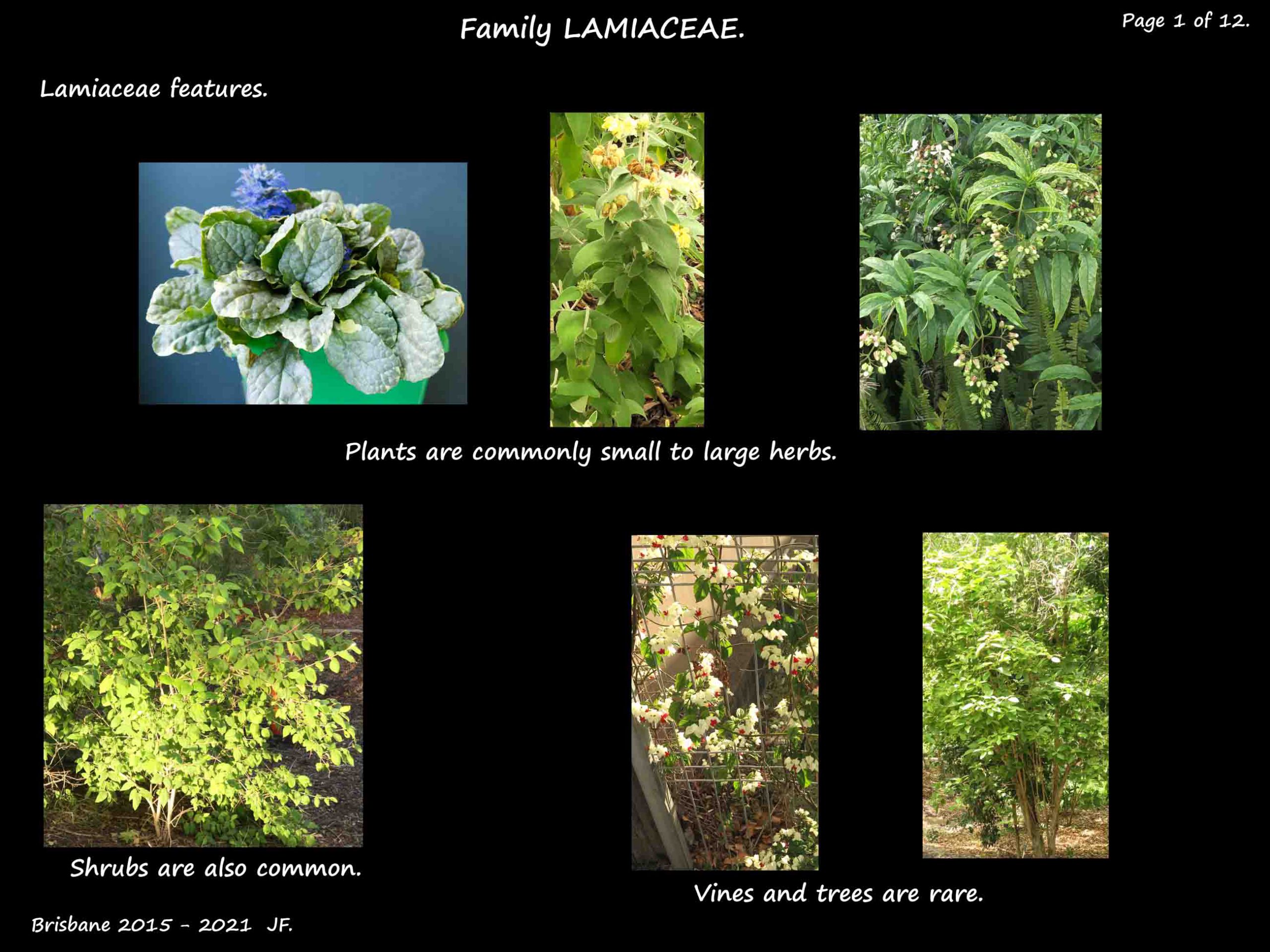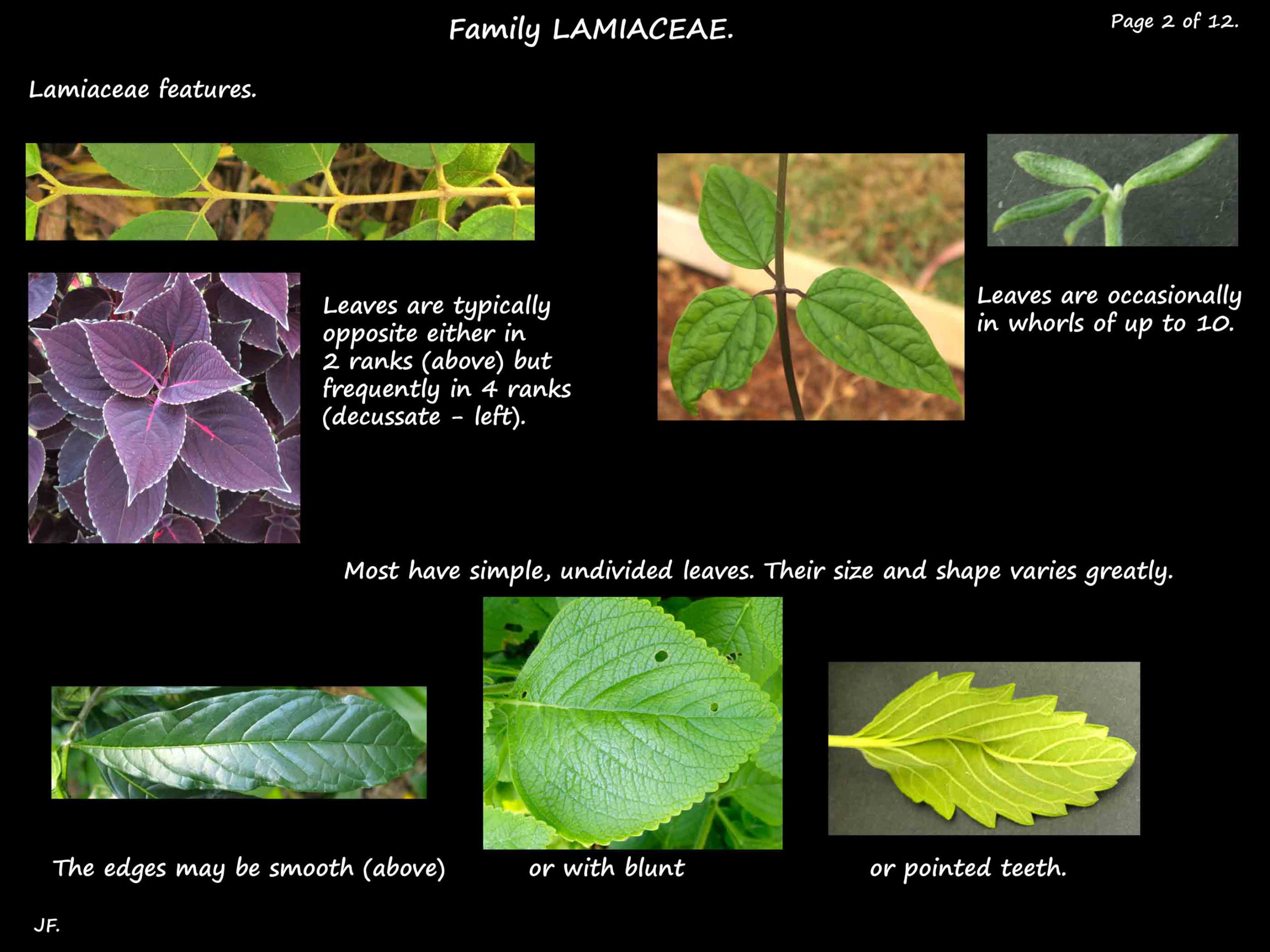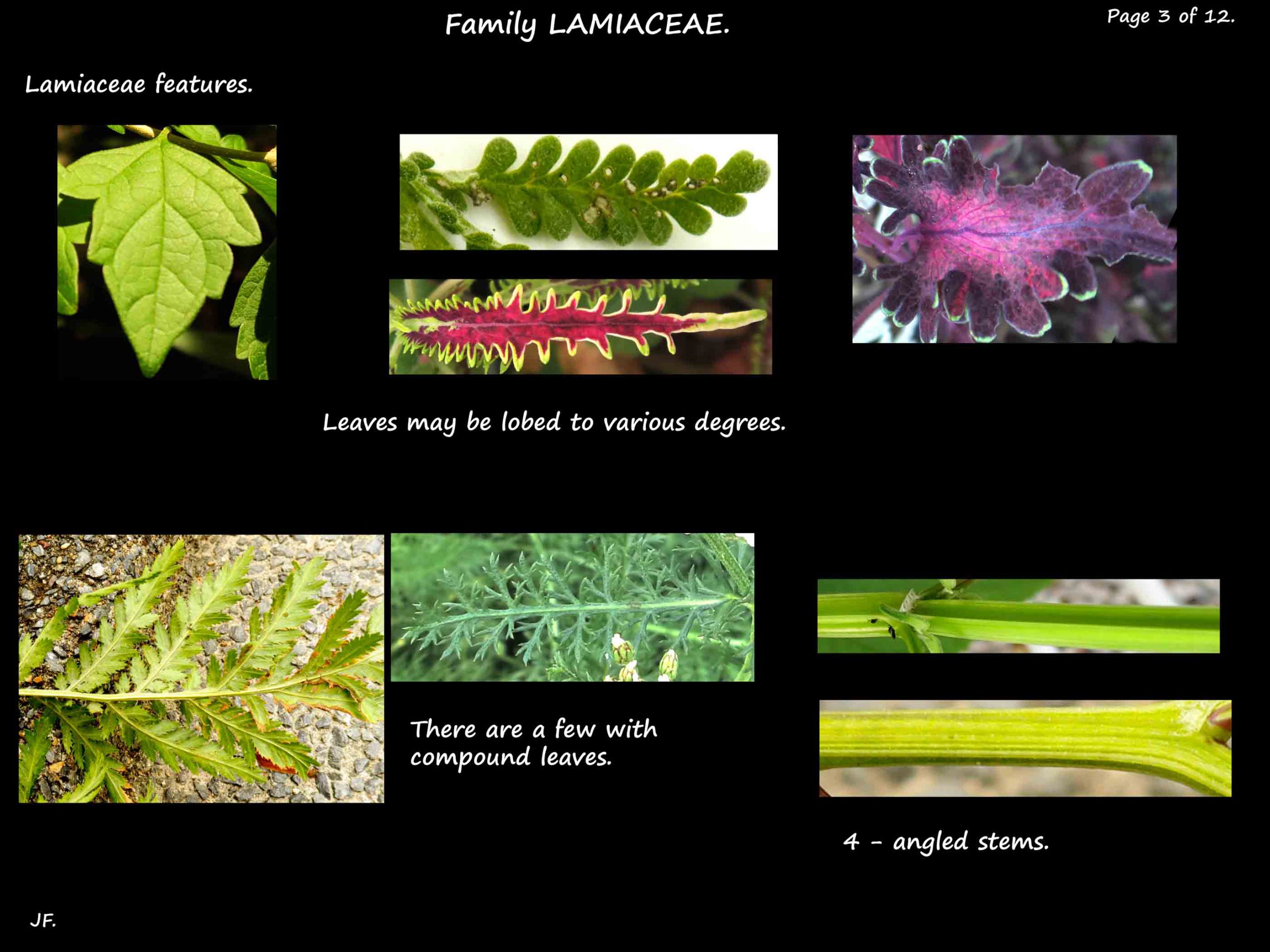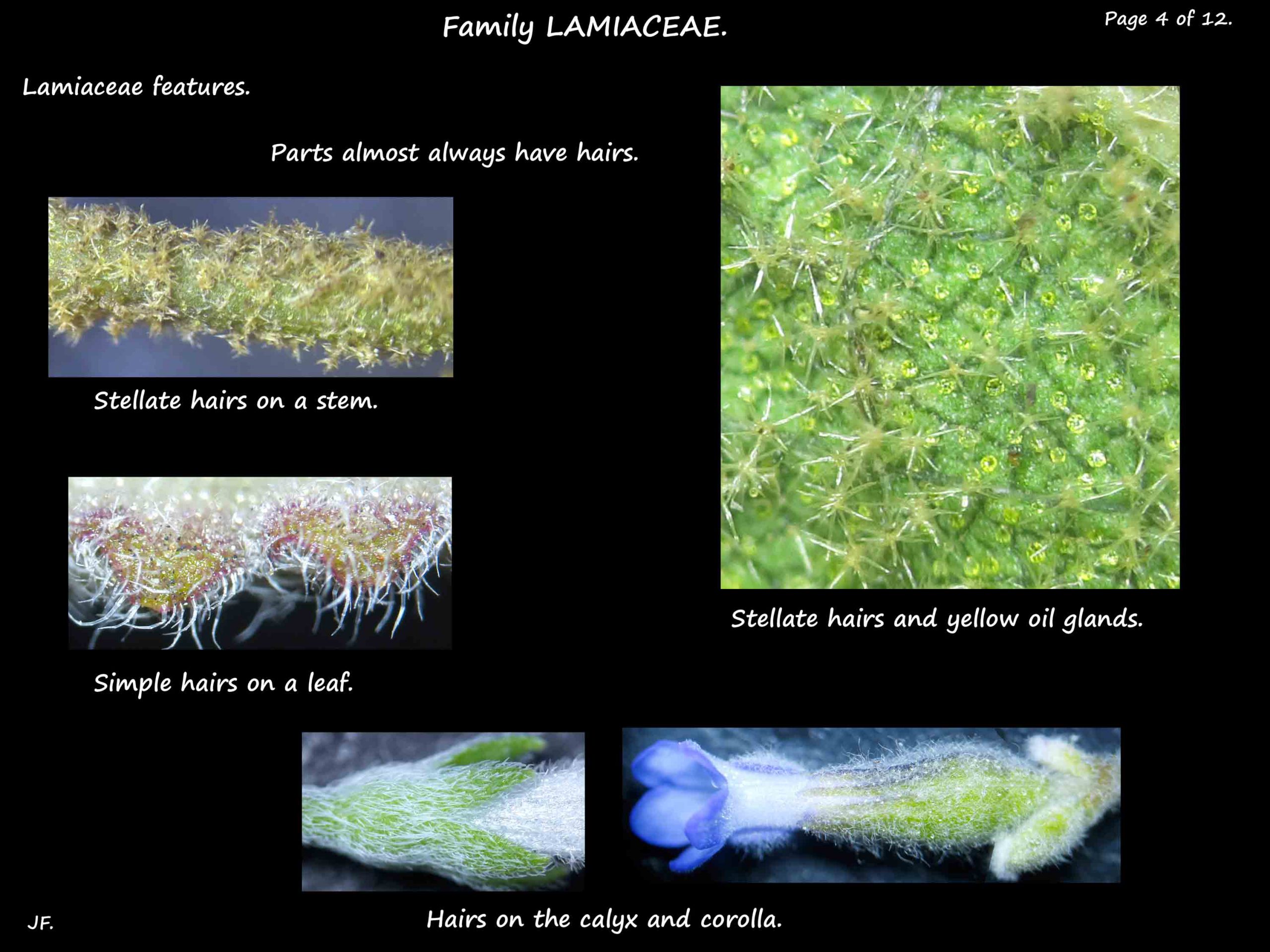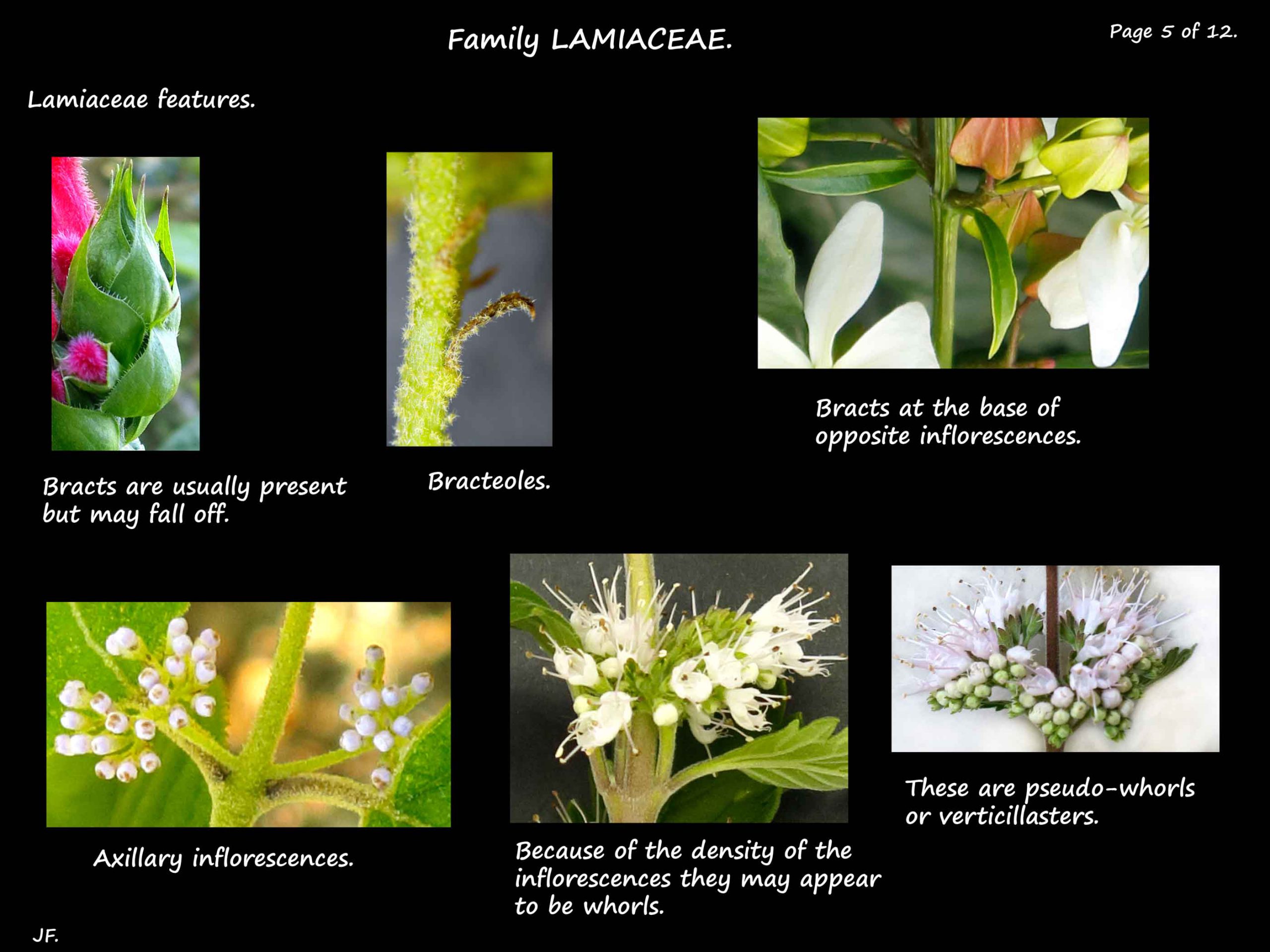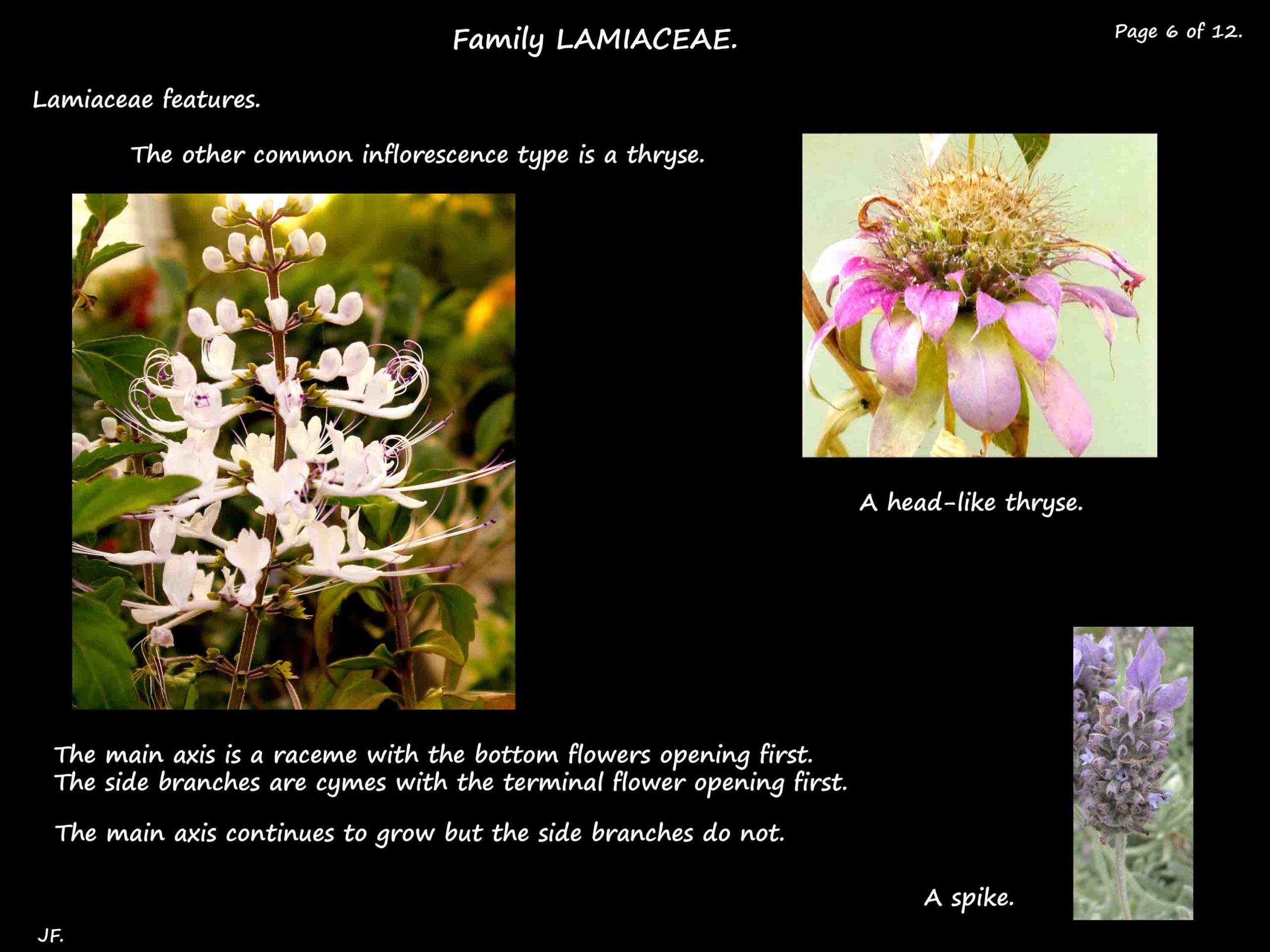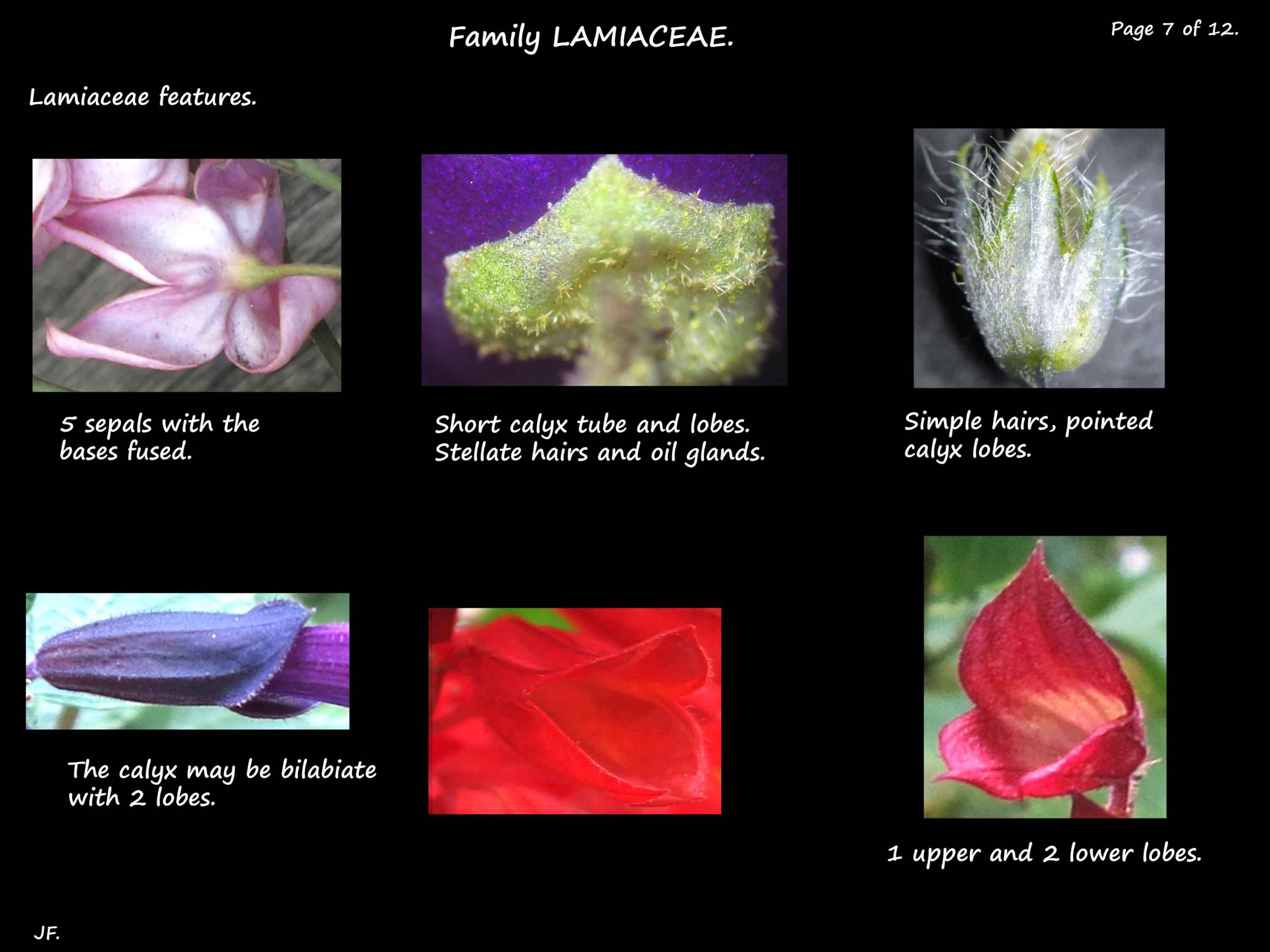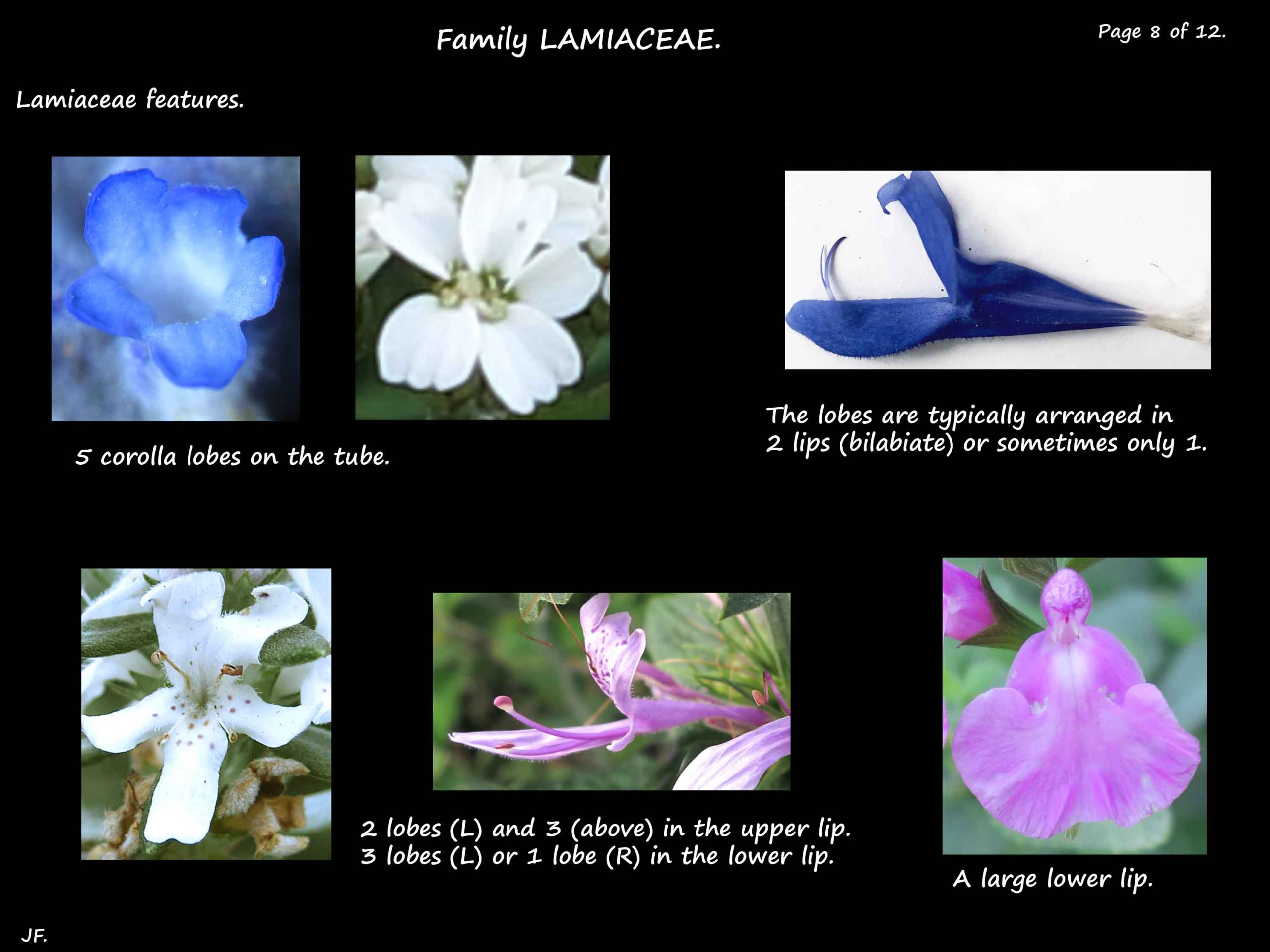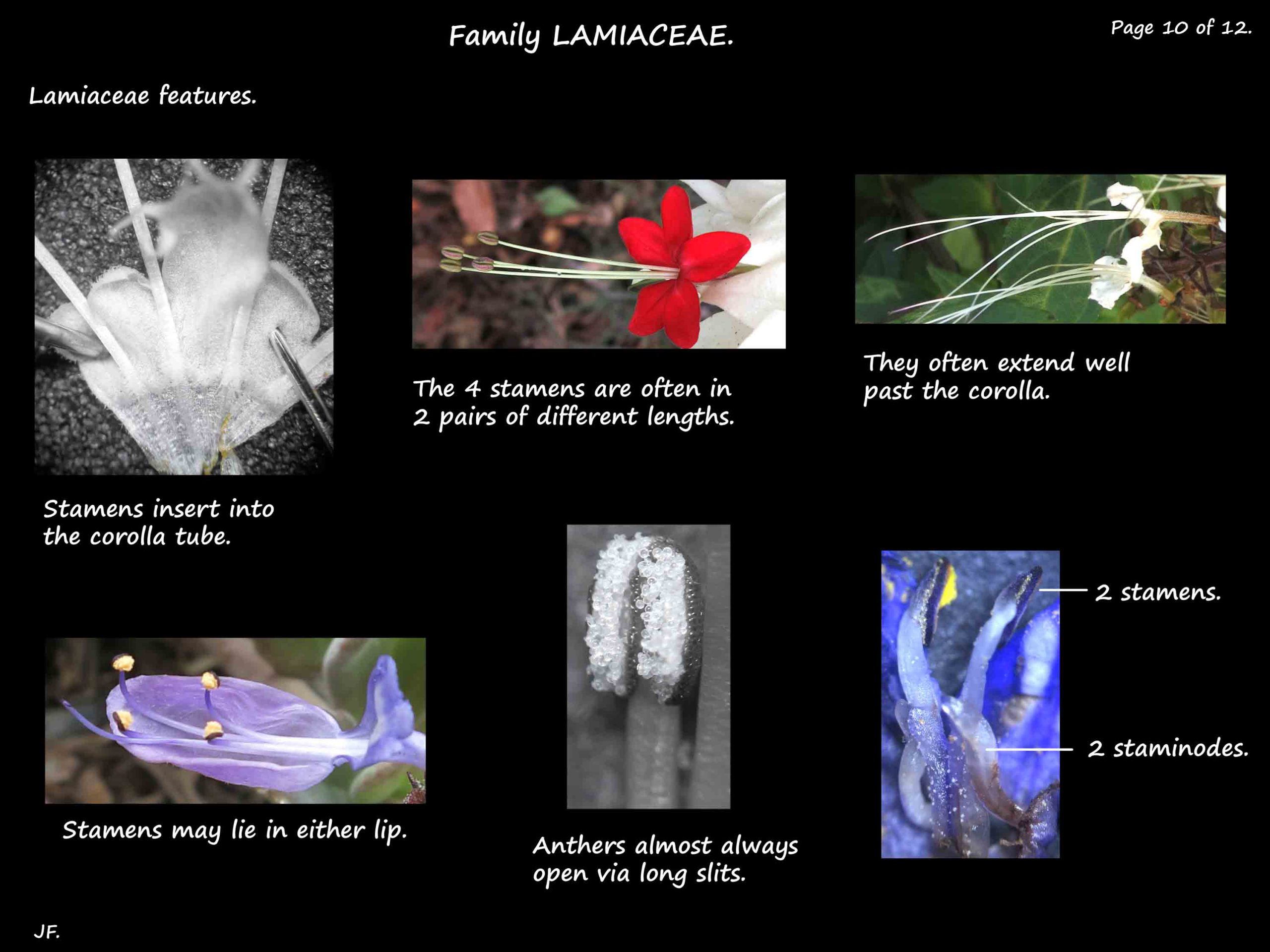Lamiaceae (Labiatae).
The Mint family has been undergoing reorganisation for many years particularly in
relation to the Family Verbenaceae.
The family has about 237 genera with around 6500 species (6300 – 7500).
Most are from the Mediterranean and the S.W. Asia area.
Australia has around 165 native species and 75 that have been introduced.
Lamiaceae is divided into 7 sub-families – Ajugoideae, Lamioideae, Nepetoideae, Prostantheroideae,
Scutellarioideae, Symphorematoideae and Viticoideae- plus a few genera still that are still unplaced.
Some well known genera grown in Australia include Ajuga, Callicarpa, Clerodendrum, Holmskioldia, Lavandula,
Ocimum, Origanum, Plectranthus, Rosmarinus, Salvia, Solenostemon, Tetradenia, Thymus and Westringia.
The main characterising features are plants that are herbs or shrubs with 4 sided stems,
aromatic oils, inflorescences a verticillaster (pseudo-whorl) or thryse#, a bilabiate (2-lipped)
corolla, a 4-lobed ovary and dry indehiscent fruit (schizocarps) with 4 nutlets.
With such a large family there is a wide range of features and the ones below are some of those most commonly seen.
Plants are mostly herbs or shrubs and rarely trees or lianas (woody vines).
Many stems are 4-angled or square especially when young.
Hairs are usually present and are mostly thread-like but sometimes scaly.
The hairs can be simple or branched and with or without glands.
When present the glands are usually large.
The leaves are opposite, sometimes in whorls of up to 10 and very rarely alternate.
They may be on petioles or with the blade directly attached to the branch (sessile).
The blade can be simple or lobed and some genera have compound leaves.
Simple leaves have a heart or wedge-shaped base, a pointed tip and an entire or toothed edge.
The blade can be flat, rolled, folded or round in cross section.
Many have leaves, and other parts, that are aromatic due to the presence of essential oils.
Inflorescences can be terminal but are typically in the axils of the opposing leaves or the leaf-like bracts.
Most are dense clusters of variously arranged flowers (rarely only 1 or 2).
This may give the appearance of a whorl or verticel but is a pseudo-whorl (verticillaster).
There are usually bracts that may persist or fall off.
The very small to medium sized flowers are mostly bisexual.
There are 5 sepals in a straight or curved, tubular, funnel or bell-shaped calyx.
The bases are fused and the rim of the calyx tube has 5 (2, 3 or 4) lobes.
The calyx may be bilabiate and the lobes can be similar or unequal and blunt or pointed.
The bases of the 5 petals form a long or short, straight or curved corolla tube.
The rim has 5 (2 – 7) lobes typically as 1 or 2 (bilabiate) deep lips.
The upper lip commonly has 2 lobes and the lower lip 3 lobes.
One lip may be concave or form a hood.
Common colours are white, blue and mauve sometimes with lines or spots in the throat.
There may be hairs on the calyx and corolla tubes and a ring of hairs inside the throats.
There may be a stalk holding the stamens or the ovary (an andropohore or gynophore).
The nectaries, around the base of the ovary, form a disc, lobes or are just a patch of tissue.
There are 4 stamens often in 2 pairs of different lengths.
The lower or anterior pair are usually the longer ones.
Two of the 4 stamens may be reduced to staminodes.
Stamens lie opposite the sepals and insert into the corolla tube at various levels.
Stamens may lie within the corolla tube but often extend well past it.
They sometimes lie within one of the lips.
The basi or dorsi-fixed anthers may lie in pairs or all be separate.
They open inwards via longitudinal slits but occasionally have apical pores.
They sometimes have appendages.
The superior ovary, from 2 fused carpels, has 2 locules or, due to false septa 4 locules.
If there are 2 locules each usually has 2 ovules or if 4 locules there is one ovule in each.
The ovary may be entire with an sub-apical style in a slight depression.
However it is commonly deeply lobed with the style arising near the base or completely
separated into 4 lobes with the style at the base (a gynobasic style).
The stigma is typically forked but may be 1 or 2 small head-like lobes.
The fruit are mostly dry, indehiscent schizocarps with 4 (2 or 3) chambers (locules).
Each chamber or mericarp contains 1 nutlet that may have an irregular surface or hairs.
The calyx persists and may increase in size with the fruit.
Fruit are rarely drupe-like.
#Inflorescences.
A thryse is a compact, branched inflorescence in which the main axis is indeterminate
(i.e. a raceme where the flowers open from the bottom up) and the side branches are
determinate (cymose where the terminal flower opens first).
The short glossary in section 6b has a brief description of some of these terms.
J.F.

